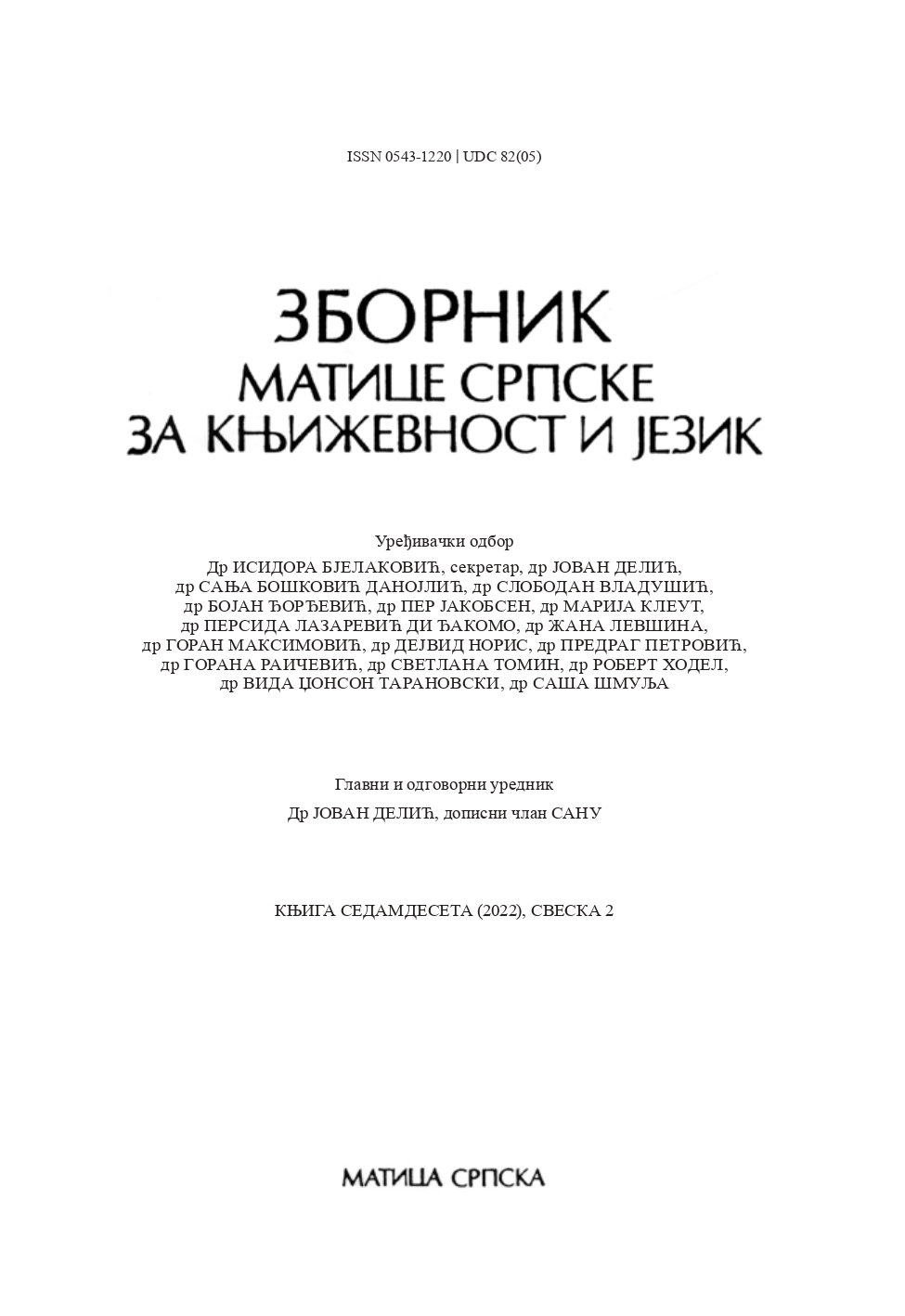ДУАЛНОСТ КАО ЕСЕНЦИЈА БИЋА: ФЕНОМЕН ПОДВАЈАЊА
ЛИЧНОСТИ У РОМАНИМА БРАЋА КАРАМАЗОВИ ФЈОДОРА ДОСТОЈЕВСКОГ И ПРОКЛЕТА АВЛИЈА ИВЕ АНДРИЋА
DUALITY AS THE ESSENCE OF BEING: THE PHENOMENON OF SPLIT PERSONALITIES IN FYODOR DOSTOEVSKY’S THE BROTHERS KARAMAZOV AND IVO ANDRIĆ’S THE DAMNED YARD
Author(s): Sofija SkubanSubject(s): Language and Literature Studies, Studies of Literature, Comparative Study of Literature
Published by: Матица српска
Summary/Abstract: This paper explores the theme of duality in the novels The Brothers Karamazov by Fyodor Dostoevsky and The Damned Yard by Ivo Andrić, focusing on the phenomenon of split personalities, mostly visible in the characters of Ivan and Dmitri Karamazov, as well as Karagöz, Kamil, and Cem sultan. The dual nature of characters, culminating in split personalities, often comes as a consequence of their internal ethical and ideological struggles, as well as their feeling of unbelonging, and is, therefore, underscored by biblical subtext. Ivan Karamazov and Karagöz’s split personality results from their constant internal struggle between good and evil, characterized by the appearence of demonic elements. Dmitri’s duality, on the other hand, is based on his fluctuation between the bodily and the spiritual, whereas Kamil’s state of being torn between two worlds is overcome by his escapistic identification with Cem sultan, who is himself an embodiment of duality. Relying upon biblical archetypes, such as the story of Cain and Abel and the temptation of Christ, Dostoevsky and Andrić point to duality as an inherent characteristic of a human being, thus creating universal meanings. In connection to that, the aim of this paper is to show that duality is one of the basic principles on which Dostoevsky’s and Andrić’s works are built, as well as to point to Dostoevsky’s influence not only on Andrić’s works, but on the entire Serbian literature of the 20th century.
Journal: Зборник Матице српске за књижевност и језик
- Issue Year: 70/2022
- Issue No: 2
- Page Range: 579-589
- Page Count: 11
- Language: Serbian

